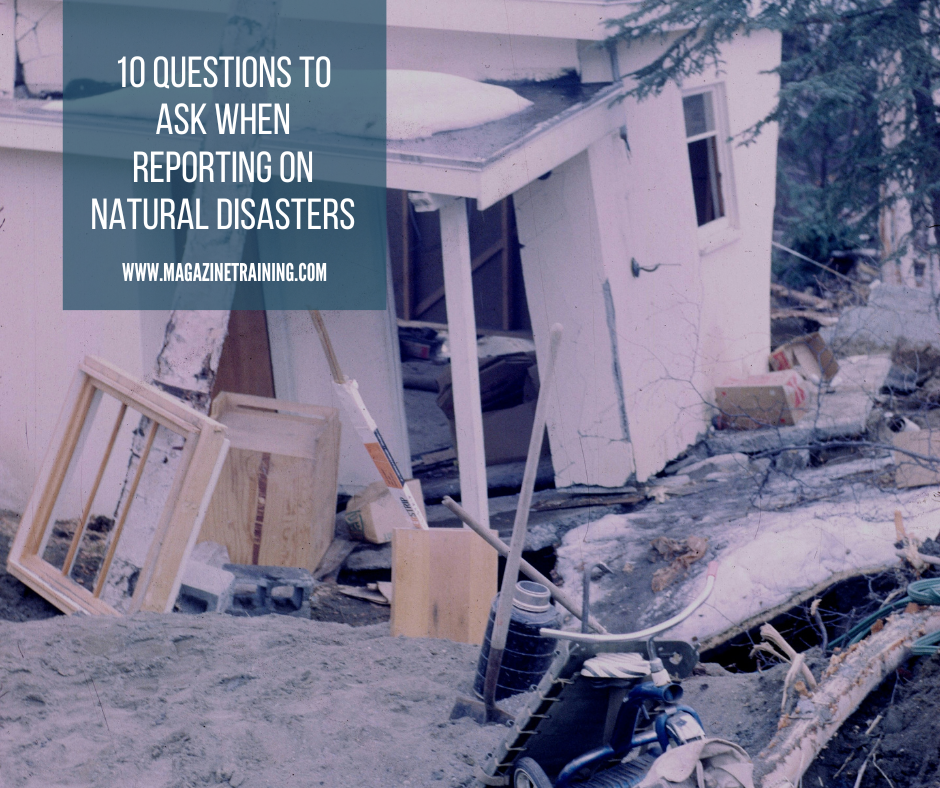
The disastrous February 6, 2023 earthquake in Turkey and Syria has reminded the world’s journalists that, increasingly, “natural disasters” are not entirely natural — and are often made far worse by human missteps, neglect, or corruption.
A good starting point for watchdog reporters is to eliminate the idea that damage from a natural disaster like the earthquakes in Turkey is simply because of “acts of nature.”
For instance, while dozens of building contractors linked to collapsed buildings have been arrested in Turkey, many of those structures were never strengthened due to reckless amnesty laws pushed through by politicians and other officials who have not been held accountable.
As of mid-February, at least 40,000 people had died — a toll made much worse by this enabled neglect, according to experts.
Given the impact of climate change, corruption, and the erosion of democratic institutions in the past decade, it is more important than ever that watchdog reporters actively investigate the aftermath of floods, earthquakes, tsunamis, volcanic eruptions, and typhoons, and hold key players to account — whether remotely or in the field.
The founder of the Nepal Investigative Multimedia Journalism Network, journalist Rajneesh Bhandari, covered the aftermath of the 2015 Nepal earthquake for The New York Times, National Geographic, and other outlets. That event killed about 9,000 people.
“I was at a traffic police station using their internet to send my first story out,” he recalls of a video piece he did for The Times.
Bhandari says disaster investigations feature many of the classic watchdog methods, such as databases and remote sensing tools, social media search, and following the money — especially, he says, in the reconstruction phase, where the potential for corruption is high. However, he notes that these stories require extra effort by investigative journalists: to report from the field (or partner with a collaborator on site); to show empathy for survivors and grieving families; and to continue asking new and creative questions in the weeks and months after the event.
A good starting point for watchdog reporters is to eliminate the idea that damage from a natural disaster like the earthquakes in Turkey is simply because of “acts of nature.” Think of it, instead, as a mix of hazardous events and human actions. And then start following the forensic trails: the money, the people, the unforeseen needs, the accountable officials. Your investigation may well be the first to point out what really happened, and potentially save lives in the future.
With that in mind, here are 10 questions for investigative editors and reporters to ask — of their sources, and of themselves.
1. Where did the relief money go — and where are the choke points that stop the flow?
Disasters trigger the release of millions of dollars in aid, reconstruction grants, and relief resources. In addition to cases of corruption, journalists have often revealed alarming distribution mistakes and systemic delivery failures that divert or stall that money. The Centre for Investigative Journalism, Nepal, produced an outstanding watchdog story on choke-points in reconstruction funding, following Nepal’s devastating earthquake in 2015, which showed that only 3% of the money had helped displaced survivors after 21 months. Key money-trail questions to ask: “Who are the key figures in the distribution chain — and who has oversight?,” “Have emergency provisions or food been stolen or diverted to black market economies?,” and “How were private service providers chosen, and did they deliver on those contracts?”
2. Was the disaster made worse by human actions — before and after the event?
This single question can trigger numerous investigative angles — from quick stories on planning failures and communication foul-ups to the longer-term effects of climate change. With few exceptions, natural disasters are generally foreseeable and can be mitigated with planning, resource allocation, and — in cases like hurricane storm surges, volcanic eruptions, and tsunamis — even timely public warnings. And damage and loss of life can be limited by effective and coordinated government mobilization, as was seen in the successful response to the 7.1 magnitude Canterbury earthquake in New Zealand in 2010 — which killed only one person.
Related posts
Magazine Training International’s mission is to encourage, strengthen, and provide training and resources to Christian magazine publishers as they seek to build the church and reach their societies for Christ.

